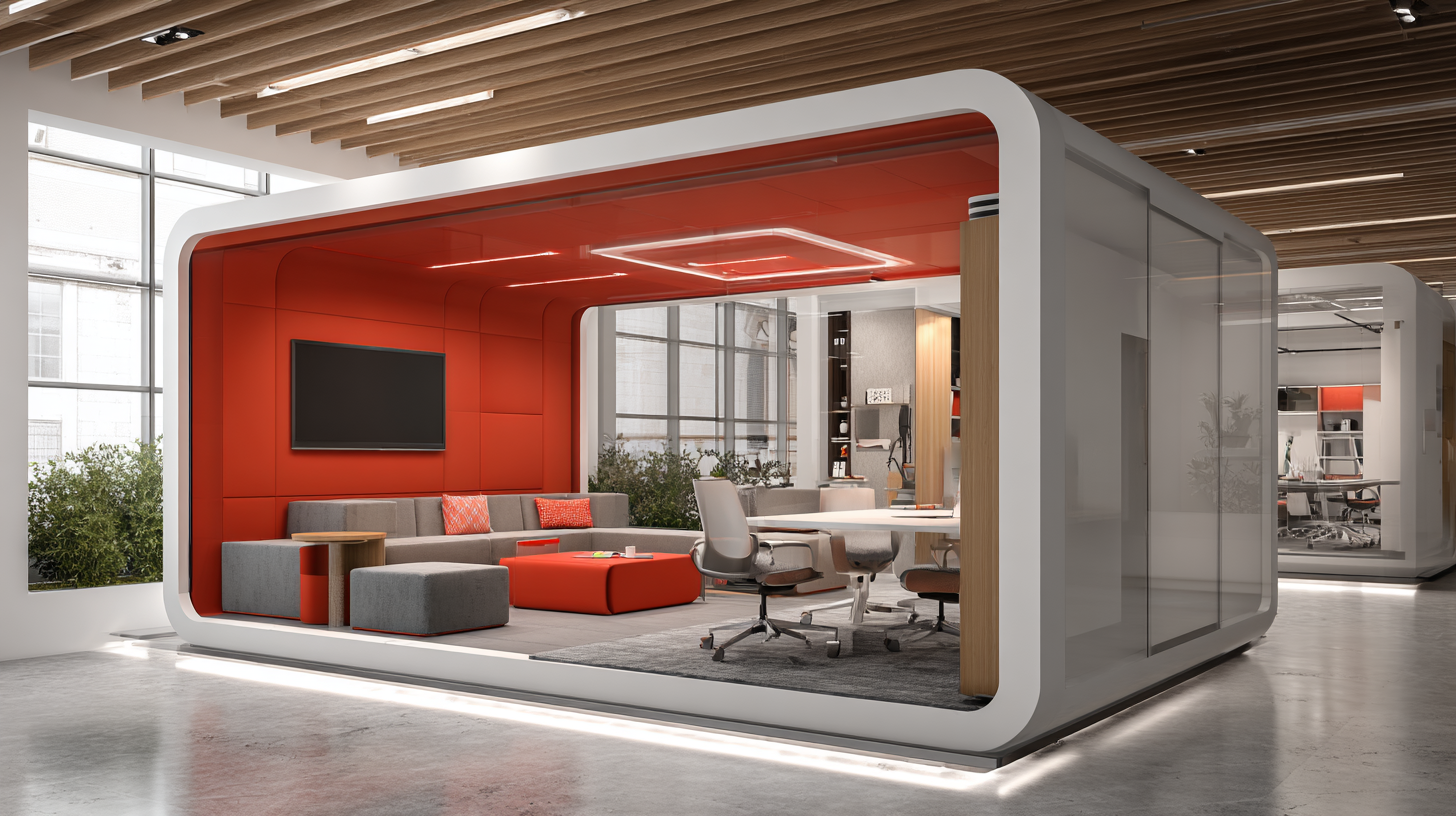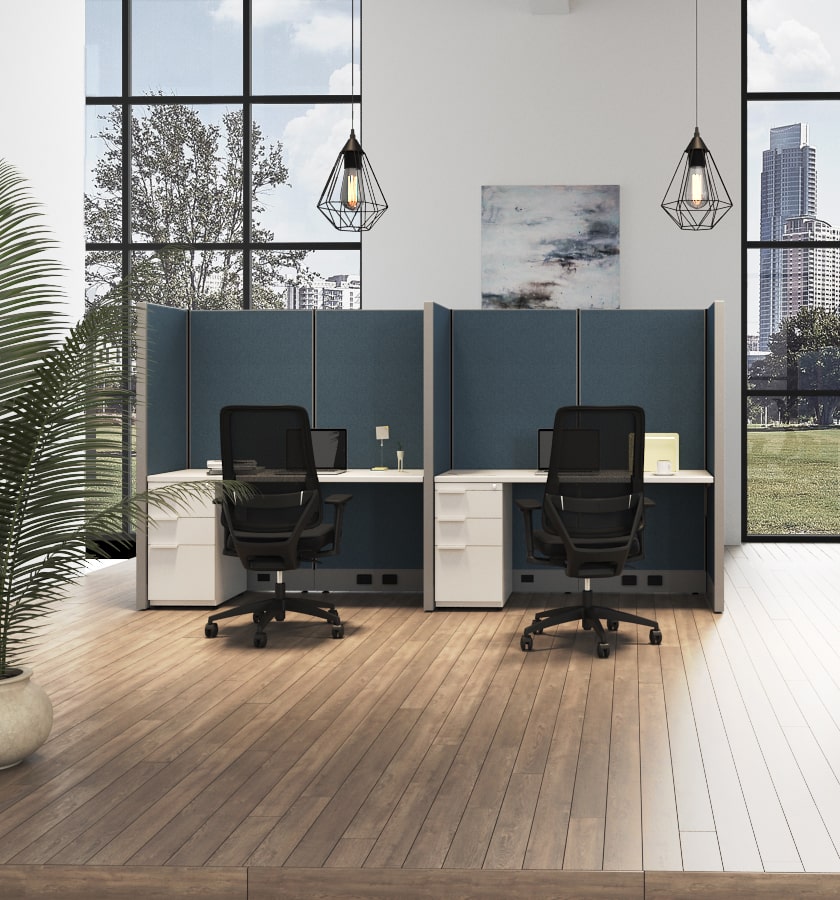2025 Innovative Office Solutions to Boost Productivity and Efficiency
In today's fast-paced business environment, organizations are continually seeking innovative office solutions to enhance productivity and efficiency. The workspace has evolved significantly, incorporating advanced technologies and flexible designs that cater to the diverse needs of modern employees. As we look towards 2025, it is essential to explore how emerging trends in office solutions can transform the way we work, fostering an atmosphere that promotes collaboration, creativity, and well-being.

As we delve into the innovative concepts driving the future of office solutions, it becomes clear that understanding these trends will be crucial for businesses aiming to remain competitive. Adopting a forward-thinking approach to workplace design and technology integration can lead to significant improvements in productivity and overall operational efficiency, setting the stage for success in the years to come.
Revolutionizing Workspace Design: Creating Dynamic Environments for Enhanced Collaboration
The evolution of workspace design is being driven by innovative solutions that prioritize collaboration and employee well-being. With the integration of AI-powered tools, organizations are transforming their environments into dynamic spaces that foster teamwork and creativity. These advancements enable real-time data-driven space optimization, ensuring that the layout and design of offices align with the workflow and needs of their teams. By analyzing behavior patterns and preferences, AI facilitates the creation of custom workspaces that enhance communication and enhance productivity.
Furthermore, smart office solutions are expanding the boundaries of collaboration. Enhanced digital platforms allow teams to stay connected seamlessly, whether working remotely or in a hybrid setting. Recent developments have showcased how integrating AI capabilities can significantly transform team dynamics and workflows, encouraging flexibility and innovation. Ergonomically designed furnishings and sustainable materials are also gaining traction, reflecting the modern workplace's shift towards not just functionality but overall employee satisfaction. The result is an environment that not only supports operational efficiency but also cultivates a culture of collaboration and engagement among employees.
Integrating Smart Technology: Utilizing AI and IoT to Streamline Office Operations
 In the rapidly evolving landscape of office environments, integrating smart technology is essential for enhancing productivity and efficiency. By leveraging artificial intelligence (AI) and the Internet of Things (IoT), businesses can streamline their operations, facilitate better communication, and create a more adaptive workspace. AI-driven tools can analyze vast amounts of data, allowing organizations to identify bottlenecks and optimize workflows in real-time, while IoT devices can automate mundane tasks, freeing up employees to focus on more strategic initiatives.
In the rapidly evolving landscape of office environments, integrating smart technology is essential for enhancing productivity and efficiency. By leveraging artificial intelligence (AI) and the Internet of Things (IoT), businesses can streamline their operations, facilitate better communication, and create a more adaptive workspace. AI-driven tools can analyze vast amounts of data, allowing organizations to identify bottlenecks and optimize workflows in real-time, while IoT devices can automate mundane tasks, freeing up employees to focus on more strategic initiatives.
Tips: To begin integrating AI and IoT into your office, assess your current processes and identify areas that could benefit from automation. Start small by implementing smart devices such as connected printers or intelligent meeting room systems that can manage schedules and resources efficiently. As these tools become part of your daily routine, continually seek feedback from your team to refine their functionalities and increase overall performance.
Moreover, ensuring that all employees are trained to use these technologies effectively is crucial. Host regular workshops to familiarize them with AI applications and IoT devices. Engaging staff in the transition will foster a culture of innovation and adaptability, ultimately driving better results and a more collaborative office atmosphere. Embracing these advancements will not only boost productivity but also pave the way for a future-ready workplace.
Flexible Work Arrangements: Embracing Hybrid Models for Increased Employee Satisfaction
As companies continue to evolve, flexible work arrangements have become a cornerstone of enhancing employee satisfaction. Embracing hybrid models allows employees to split their time between the office and remote work, catering to diverse preferences and lifestyles. This approach not only helps in achieving a better work-life balance but also boosts overall morale and productivity.
**Tips:** To implement a successful hybrid model, ensure clear communication channels are established. Regular check-ins can help maintain team cohesion, while offering flexibility in working hours can accommodate everyone’s unique schedule.
Investing in the right tools is crucial for seamless collaboration in a hybrid setup. Utilize project management software and virtual meeting platforms to keep everyone connected and engaged, regardless of their physical location. Prioritize creating an inclusive culture by encouraging feedback from employees about their remote work experiences, helping you refine the model to better suit your team’s needs. By doing so, companies can foster an environment where employees feel valued and empowered to perform at their best.
Impact of Flexible Work Arrangements on Employee Satisfaction
This chart illustrates the correlation between the adoption of flexible work arrangements and employee satisfaction levels based on surveys conducted in various industries. The data represents the percentage improvement in satisfaction over the past few years.
Data-Driven Insights: Leveraging Analytics to Optimize Productivity Strategies
Data-driven insights are increasingly becoming integral to optimizing productivity strategies across various sectors. By leveraging analytics, companies can streamline their operations and make informed decisions that enhance efficiency. For instance, advancements in artificial intelligence (AI) are significantly improving business analysis, allowing organizations to analyze vast amounts of data quickly and accurately. This capability enables sales leaders to refine their processes, shorten sales cycles, and effectively target high-value clients, thereby boosting overall productivity.
Moreover, the application of data analytics is not limited to traditional corporate environments. Industries like ranching are utilizing IoT and predictive analytics to enhance livestock health and promote sustainable management practices. This adoption of data-driven strategies has the potential to transform productivity and operational efficiency in ways previously unimaginable. As businesses increasingly turn to analytics for strategic decision-making, the impact of these technologies will be felt across all sectors, reinforcing the necessity of embracing innovative solutions to thrive in a competitive landscape.
2025 Innovative Office Solutions to Boost Productivity and Efficiency - Data-Driven Insights: Leveraging Analytics to Optimize Productivity Strategies
| Solution | Implementation Cost (USD) | Expected Productivity Increase (%) | Time to Implement (Months) | Employee Satisfaction Rating (1-10) |
|---|---|---|---|---|
| Smart Collaboration Tools | $5,000 | 20% | 3 | 8 |
| AI-Driven Task Automation | $15,000 | 35% | 5 | 9 |
| Flexible Workspace Design | $10,000 | 25% | 4 | 7 |
| Employee Wellness Programs | $7,500 | 30% | 6 | 9 |
| Data Analytics for Performance Tracking | $8,000 | 28% | 4 | 7 |
Sustainability in the Office: Innovative Practices for a Greener Workplace Environment
The modern office landscape is rapidly evolving, with sustainability becoming a critical focus for organizations aiming to enhance their workplace environment. According to a report by the Global Sustainability Institute, sustainable office practices can reduce energy consumption by up to 40%. This significant reduction not only lessens the carbon footprint but also leads to substantial cost savings, thus improving overall efficiency. Companies are increasingly adopting eco-friendly materials and technologies, such as energy-efficient lighting and furniture made from recycled materials, which contribute to a healthier and more productive atmosphere.
Furthermore, the implementation of green practices like biophilic design can dramatically boost employee well-being and productivity. A study from Human Spaces reveals that workplaces incorporating natural elements can increase employee satisfaction by 15% and productivity by up to 6%. By integrating plants and natural light into office spaces, organizations can create an environment that not only fosters creativity but also promotes mental health. As businesses strive for a competitive edge, embracing innovative and sustainable office solutions will be essential for cultivating a greener and more productive workplace.




